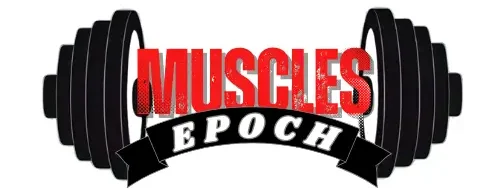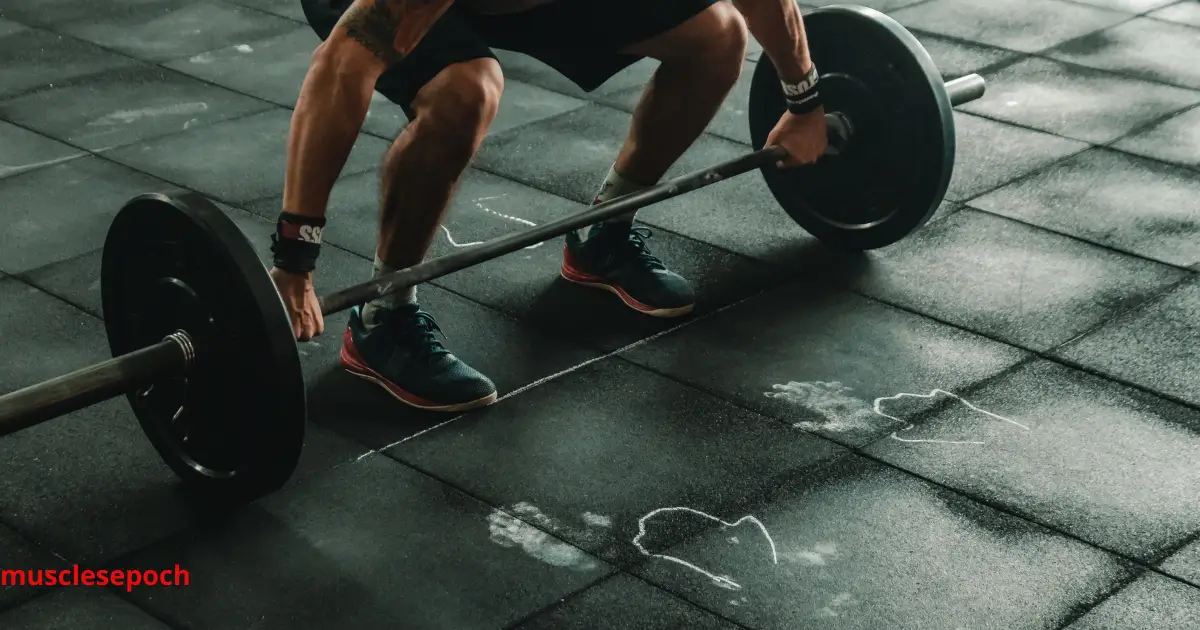Starting your fitness journey can feel overwhelming, especially with so many workout programs promising fast results. But if you’re a beginner looking for a simple, effective, and time-efficient approach to building strength and muscle, the 3-day push/pull/legs (PPL) split might be your perfect match. This structured routine divides training into movement patterns, ensuring balanced muscle development, optimal recovery, and steady progress. Whether you’re training at home or in the gym, the PPL method provides a clear path toward reaching your fitness goals—without the burnout.
Why Beginners Should Start with a 3-Day Push/Pull/Legs Split
What Is the PPL Workout Routine?
The Push/Pull/Legs (PPL) workout routine is a popular strength training split that divides workouts based on movement patterns and the muscle groups involved in each. It breaks down into three categories:
- Push: Exercises that involve pushing movements, typically targeting the chest, shoulders, and triceps (e.g., bench press, overhead press, triceps dips).
- Pull: Exercises that involve pulling motions, focusing on the back and biceps (e.g., pull-ups, rows, bicep curls).
- Legs: Lower body movements that work the quadriceps, hamstrings, glutes, and calves (e.g., squats, lunges, leg presses).
This method is highly efficient for beginners because it creates a logical structure, ensuring no muscle group is neglected and allowing time for recovery between sessions. A 3-day version of the PPL split typically spreads workouts across the week—such as Monday (Push), Wednesday (Pull), and Friday (Legs)—making it manageable and sustainable for those just starting out.
Additionally, the PPL routine is easy to customize. Beginners can keep it simple with foundational movements, while more advanced lifters can increase frequency or intensity over time. Its versatility and balanced approach are key reasons why it remains one of the most effective full-body training splits available.
Benefits of a 3-Day PPL Plan for New Lifters
For beginners entering the world of resistance training, the 3-Day Push/Pull/Legs (PPL) workout split offers numerous advantages that promote progress, prevent burnout, and establish solid fitness habits:
1. Simple and Easy to Follow
One of the biggest advantages of a 3-day PPL split is its simplicity. By organizing workouts around movement patterns (push, pull, and legs), new lifters avoid the confusion of deciding which muscles to train on which days. This structure provides clarity and consistency, helping beginners stay on track and build routine.
2. Balanced Muscle Development
The PPL split naturally ensures that all major muscle groups are trained evenly throughout the week. This balanced approach reduces the risk of muscular imbalances—common in beginners who may overtrain upper body or neglect lower body work—and helps create a strong, functional physique from day one.
3. Adequate Recovery Time
Since each muscle group is trained once per week (or twice if the routine is repeated), beginners benefit from ample rest between sessions. This is crucial during the early stages of training when the body is still adapting to resistance. Recovery time supports muscle repair, reduces soreness (DOMS), and lowers injury risk.
4. Scalable for Progression
While the plan is ideal for beginners, it can easily be scaled as strength and endurance improve. Once lifters build consistency, they can increase volume, intensity, or frequency, progressing to a 6-day PPL version. This flexibility makes it a long-term solution, not just a beginner’s plan.
5. Builds a Strong Foundation
Starting with a 3-day PPL routine helps beginners master basic movement mechanics (such as pressing, rowing, and squatting), which form the foundation for more advanced training later on. Learning proper technique early is key for long-term success and avoiding injury.
How It Compares to Full-Body or Bro-Splits
When deciding on a workout routine, beginners often encounter multiple training styles — notably full-body workouts and traditional “bro-splits.” Each method has its merits, but understanding how a 3-day Push/Pull/Legs (PPL) split stacks up can help new lifters choose the most effective path.
1. Versus Full-Body Workouts
Full-body workouts involve training every major muscle group in a single session, usually performed 2–3 times per week. While effective for total-body conditioning and time efficiency, these sessions can be long and physically demanding, especially for beginners.
Comparison Highlights:
- PPL is more focused: Instead of hitting everything at once, PPL allows targeted training per session, which means more volume and attention per muscle group.
- Better recovery: PPL gives individual muscle groups several days to recover before being worked again, while full-body workouts may challenge sore or recovering muscles.
- Skill development: PPL enables more practice and mastery of specific movement patterns (e.g., pressing or pulling), beneficial for form improvement.
2. Versus Bro-Splits
Bro-splits typically assign one muscle group per workout (e.g., chest on Monday, back on Tuesday), often extending over five or more days a week. While popular in bodybuilding circles, bro-splits may not be ideal for beginners due to their low frequency per muscle group.
Comparison Highlights:
- Efficiency: PPL hits each muscle group more frequently (usually once every 5–7 days on a 3-day version), promoting better muscle stimulation and growth in beginners.
- Lower time commitment: Bro-splits often require 5–6 gym days a week, which can be unsustainable for new lifters. The 3-day PPL split is manageable and consistent.
- Better progression: PPL encourages compound movements and progression tracking, while bro-splits can overly focus on isolation and aesthetic work, which may not serve beginners as well.
3. Summary: Why PPL Wins for Beginners
The 3-day PPL split strikes the perfect balance between structure, recovery, and focus. It allows beginners to train intelligently and consistently without being overwhelmed or under-stimulated. While full-body and bro-splits have their place, the PPL method provides the ideal training frequency, workload distribution, and progression model for new lifters looking to build muscle, improve strength, and stay motivated.
The 3-Day Beginner PPL Workout Plan Explained
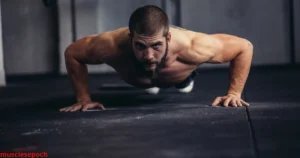
Day 1 – Push Day (Chest, Shoulders, Triceps)
Push Day is all about training the muscles responsible for pushing movements — mainly the chest, shoulders, and triceps. These muscle groups often work together in upper body exercises, so grouping them into one session allows for synergistic and efficient training.
1. Muscles Targeted
- Chest (pectoralis major and minor): Primary movers in horizontal pushing exercises like bench presses and push-ups.
- Shoulders (deltoids, especially the front and side heads): Essential for overhead and incline pressing.
- Triceps (three-headed muscle on the back of the upper arm): Crucial for elbow extension and lockout strength during pressing.
2. Beginner-Friendly Exercise Examples
Here’s a simple yet effective Push Day routine tailored for beginners:
- Flat Dumbbell Press or Machine Chest Press – Builds overall chest strength with joint stability.
- Overhead Shoulder Press (Machine or Dumbbells) – Strengthens deltoids and triceps while reinforcing core engagement.
- Triceps Pushdowns (Cable or Resistance Band) – Isolates the triceps and improves arm definition.
Optional additions: Incline dumbbell press, lateral raises (for shoulders), and close-grip push-ups.
3. Tips for Push Day Success
- Warm-up thoroughly with dynamic shoulder mobility and light pressing sets to prevent shoulder strain.
- Focus on controlled movements to avoid using momentum — this enhances muscle engagement.
- Don’t overlook form — especially on overhead presses — to protect your shoulders and lower back.
- Use progressive overload by slowly increasing weights or reps weekly.
Day 2 – Pull Day (Back, Biceps)
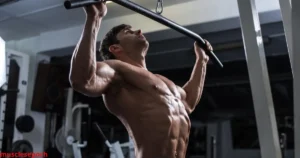
Pull Day focuses on the pulling muscles of the upper body — primarily the back and biceps. These muscle groups work together during any pulling motion, such as rows or pull-ups. For beginners, training them together provides a logical and effective structure for building both strength and muscle.
1. Muscles Targeted
- Back: Includes the lats (latissimus dorsi), rhomboids, traps (trapezius), and spinal erectors. These muscles are essential for posture, pulling strength, and overall upper body balance.
- Biceps: The biceps brachii, located on the front of the upper arm, assists in elbow flexion during pulling exercises like curls and rows.
- Forearms: Also engaged during gripping movements, contributing to grip strength and endurance.
2. Beginner-Friendly Exercise Examples
A simple beginner pull day workout might include:
- Lat Pulldown or Assisted Pull-Ups – Develops the upper lats and improves vertical pulling strength.
- Seated Cable Rows or Dumbbell Rows – Targets the mid-back and rhomboids, helping with posture and thickness.
- Barbell or Dumbbell Bicep Curls – Isolates the biceps to increase size and strength.
Optional additions: Face pulls (for rear delts and traps), hammer curls (for forearms and brachialis), and reverse flys.
3. Tips for Pull Day Success
- Focus on mind-muscle connection, especially during back exercises — many beginners tend to let their arms take over.
- Maintain controlled movement during the eccentric (lowering) phase to fully stimulate the muscles.
- Use straps if grip fatigue limits your back training — especially useful in later sets.
- Avoid overly heavy weights early on — form and full range of motion matter more for muscle development and injury prevention.
Pull Day balances out Push Day by strengthening the posterior chain and improving pulling mechanics.
Day 3 – Legs Day (Quads, Hamstrings, Glutes, Calves)
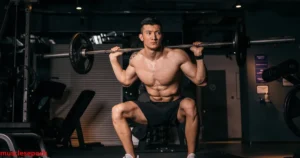
Leg Day is crucial for building lower body strength, power, and muscle mass. This workout focuses on the major leg muscle groups: quads (front of the thigh), hamstrings (back of the thigh), glutes (buttocks), and calves. A solid leg routine not only contributes to overall muscle growth but also improves functional strength and athletic performance.
1. Muscles Targeted
- Quadriceps (Quads): These muscles at the front of your thighs are responsible for knee extension and play a crucial role in squats, lunges, and leg presses.
- Hamstrings: Located at the back of your thighs, hamstrings are responsible for knee flexion and hip extension, often engaged during leg curls, deadlifts, and hip thrusts.
- Glutes: The gluteus maximus, medius, and minimus work to extend the hips and are involved in movements like squats, lunges, and hip thrusts. Strong glutes are essential for posture and movement efficiency.
- Calves: Comprised of the gastrocnemius and soleus muscles, the calves help with plantar flexion (pointing the toes) and stability during walking, running, and jumping.
2. Beginner-Friendly Exercise Examples
Here’s a simple and effective leg day routine for beginners:
- Barbell Back Squats or Smith Machine Squats – Targets the quads, hamstrings, and glutes, offering overall lower body development.
- Leg Press Machine – Provides a controlled, safe movement for the quads, hamstrings, and glutes while minimizing back strain.
- Romanian Deadlifts (RDLs) – A great exercise for hamstrings and glutes that also helps improve hip mobility.
- Leg Curl Machine (Seated or Lying) – Focuses on hamstrings and isolates them for optimal growth.
- Calf Raises (Machine or Standing) – Strengthens the calves and improves lower leg definition and stability.
Optional additions: Lunges (dumbbell or bodyweight), Bulgarian split squats (for unilateral leg strength), and glute bridges (to target the glutes and hamstrings).
3. Tips for Leg Day Success
- Warm-up thoroughly with dynamic stretches and light cardio to activate the leg muscles and improve flexibility before diving into heavy lifts.
- Prioritize form over weight, especially when performing compound movements like squats and deadlifts. A good range of motion is key to engaging all the target muscles.
- Focus on controlled reps and avoid using momentum to lift the weight — the slower the movement, the more muscle fibers you’ll recruit.
- Incorporate both compound movements (such as squats and deadlifts) and isolation exercises (like leg curls and calf raises) to hit all muscle groups and build balanced strength.
- For optimal growth, include progressive overload by gradually increasing the weight or reps each week. Don’t skip this — your muscles need increasing challenge to grow.
4. Recovery Tips
- Post-leg day recovery can be intense due to the large muscle groups involved. Make sure you get adequate rest and nutrition (protein and carbs) to aid in muscle repair.
- Use foam rolling or stretching after your workout to help alleviate tightness and reduce soreness.
- If you’re feeling excessively sore (DOMS), incorporate active recovery like light walking or swimming to help flush out lactic acid and improve blood flow.
Leg Day is essential for building strong and functional lower body muscles. By consistently targeting the quads, hamstrings, glutes, and calves, you’ll develop overall strength, improve your athletic performance, and set a solid foundation for future gains. Plus, strong legs are crucial for overall body balance and symmetry.
With Push/Pull/Legs (PPL) training, you’re setting yourself up for comprehensive muscle development, giving ample recovery time while working each muscle group effectively.
Tips for Success: Maximizing Results as a Beginner
Focus on Compound Movements and Proper Form
When it comes to building strength and muscle, compound movements are your best friend. These exercises target multiple muscle groups at once, allowing you to lift heavier weights and stimulate more muscle fibers compared to isolation exercises. For beginners, mastering compound movements is crucial to building a solid foundation in strength training. Additionally, focusing on proper form ensures you not only maximize your results but also minimize the risk of injury.
1. Why Compound Movements Matter
Compound movements are exercises that engage two or more muscle groups at the same time. Some of the most popular and effective compound exercises include squats, deadlifts, bench presses, rows, and overhead presses. Here’s why they should be the core of your training:
- Efficiency: Since compound movements work multiple muscle groups simultaneously, they save you time by offering a full-body workout in one move.
- Strength Gains: These exercises allow you to lift heavier weights, which is a key component of progressive overload and muscle growth. More muscle engagement means more strength development.
- Functional Strength: Compound exercises mimic natural movement patterns like bending, lifting, pushing, and pulling, making them essential for real-life strength, athletic performance, and injury prevention.
- Boost in Hormonal Response: Heavy compound lifts stimulate the release of growth-promoting hormones like testosterone and growth hormone, which are vital for muscle development and fat loss.
2. Examples of Essential Compound Exercises
- Squats: One of the best lower-body compound exercises. Squats engage the quads, hamstrings, glutes, and lower back, and they also strengthen the core as you maintain balance and stability.
- Deadlifts: Targeting the hamstrings, glutes, lower back, and traps, deadlifts help you develop total body strength and improve posture.
- Bench Press: This classic exercise targets the chest, shoulders, and triceps, and is essential for upper body strength.
- Pull-Ups/Chin-Ups: Great for building back strength, particularly the lats, along with the biceps. These bodyweight exercises are essential for upper-body development.
- Rows: Whether it’s a barbell row, dumbbell row, or seated cable row, this movement targets the upper back, lats, and rhomboids, helping improve posture and strength.
3. The Importance of Proper Form
No matter how much weight you can lift, form should always be your priority. Performing exercises with poor form not only leads to suboptimal results but also increases the risk of injury. Here’s why proper form is key to a safe and effective workout:
- Maximize Muscle Engagement: Proper form ensures you’re targeting the intended muscle groups correctly, which leads to better muscle activation and results. For example, in squats, sitting back into your hips and keeping your chest up ensures your quads, hamstrings, and glutes are fully activated.
- Prevents Injuries: Lifting heavy weights with poor form can cause strain on joints, ligaments, and muscles, leading to injuries like strains, sprains, or worse. Maintaining the right posture and alignment throughout exercises reduces the chances of unnecessary stress.
- Improves Longevity in Training: By learning the correct technique early on, you’ll be able to continue progressing safely over time. Bad habits can be hard to break and can limit your long-term progress.
- Increases Range of Motion: Correct form often involves working through a full range of motion, which helps to increase flexibility and muscle activation. For instance, a full range of motion in exercises like bench presses and squats leads to greater muscle development.
4. How to Ensure Proper Form
- Start Light: Begin with lighter weights until you master the form. It’s better to lift lighter weights with good form than heavy weights with poor form.
- Use Mirrors or Video: Check yourself in the mirror or record your lifts to assess your form. This will allow you to correct your posture and technique as needed.
- Engage a Trainer: If you’re new to weightlifting, working with a personal trainer can help you learn proper form and provide valuable feedback.
- Focus on Posture and Alignment: Keep your spine neutral during movements like deadlifts and squats. Never round your back or excessively arch it. Ensure your knees track over your toes, and your feet are planted flat on the floor.
- Slow Down: Avoid rushing through reps. Focus on controlled movements to fully engage muscles. Quick, jerky movements can lead to injury, especially when lifting heavy weights.
- Breathing: Don’t forget to breathe properly. Inhale during the eccentric (lowering) phase of the movement and exhale during the concentric (lifting) phase. Proper breathing helps with stability and strength during lifts.
5. Why Prioritize Compound Movements Over Isolation
While isolation exercises (such as bicep curls or tricep pushdowns) have their place, compound movements should make up the bulk of your routine, especially as a beginner. Here’s why:
- More muscle groups: Compound exercises engage multiple muscle groups simultaneously, leading to better overall muscle growth and strength.
- Higher calorie burn: Since compound movements involve large muscle groups, they burn more calories and can help with fat loss and building muscle simultaneously.
- Greater strength progression: Compound lifts allow for more weight to be added, stimulating greater increases in strength compared to isolation exercises.
- Improved functional capacity: These movements replicate real-life activities and help improve your performance in sports, lifting, or day-to-day tasks.
Key Takeaways
- Focus on compound movements for total body strength and muscle growth. These exercises are efficient, effective, and essential for building a solid foundation.
- Always prioritize proper form to ensure optimal muscle engagement, prevent injuries, and make the most out of each workout.
- While isolation exercises can complement your routine, compound movements should be the cornerstone of your training, especially in the early stages of your lifting journey.
By building your workout routine around compound lifts and focusing on proper technique, you’ll be well on your way to achieving your strength and fitness goals.
Understanding Recovery, Nutrition, and DOMS
Recovery is just as important as the workouts themselves when it comes to building strength and muscle. After a challenging leg day or any tough training session, your muscles need time to repair and rebuild. This is where recovery, proper nutrition, and understanding DOMS (Delayed Onset Muscle Soreness) play a crucial role in maximizing your gains and ensuring you stay injury-free.
1. What is DOMS?
DOMS refers to the muscle soreness that typically occurs 12-48 hours after an intense workout. It’s especially common when performing exercises that your body isn’t accustomed to, or when you’ve increased the intensity or volume of your training. Here’s what happens during DOMS:
- Microscopic Muscle Tears: During resistance training, particularly with new or intense exercises, tiny tears form in your muscle fibers. These microtears are necessary for muscle growth as the body works to repair and rebuild these fibers, making them stronger and bigger.
- Inflammation: As the muscle fibers heal, your body generates an inflammatory response to aid in the repair process, which contributes to the pain and stiffness associated with DOMS. This process can also cause some swelling in the muscles.
- Metabolic Waste: Intense workouts create metabolic waste products like lactic acid, which accumulate in the muscles. Although the pain from lactic acid is short-lived, it can sometimes contribute to the overall discomfort you feel during the recovery process.
While DOMS is a normal part of the muscle-building process, it’s important to manage it so that you can continue training effectively without unnecessary setbacks.
2. The Role of Recovery in Muscle Growth
Recovery refers to the period after a workout where your body repairs itself, and it’s a critical part of your fitness routine. Without adequate recovery, your body cannot rebuild the muscle tissue broken down during exercise, which leads to overtraining and potentially injury. Here’s why recovery is so important:
- Muscle Repair and Growth: The process of muscle growth (hypertrophy) occurs during the recovery phase, not during the workout itself. After an intense workout, your muscles need time to rebuild. This rebuilding process leads to increased strength and muscle mass.
- Preventing Overtraining: Overtraining occurs when the body doesn’t have enough time to recover between sessions, which can lead to fatigue, decreased performance, and increased risk of injury. A balanced approach to training and recovery is crucial for consistent progress.
- Reducing Injury Risk: Recovery helps restore muscle flexibility, correct imbalances, and improve mobility, reducing the risk of strains, tears, or overuse injuries.
The most effective recovery is a combination of rest days, active recovery, and good nutrition to fuel your muscles for rebuilding. Incorporating these strategies ensures that you stay on track and avoid plateauing.
3. The Role of Nutrition in Recovery
Nutrition is one of the most important aspects of recovery. After a workout, your muscles need the right nutrients to repair and grow. Here’s how to fuel your body for optimal recovery:
- Protein for Muscle Repair: Protein is the building block for muscle tissue, and it is essential for the repair and growth of muscles that were broken down during exercise. Aim for a source of lean protein (such as chicken, turkey, eggs, or plant-based protein) within an hour or two after your workout to kickstart the repair process. For most people, around 1.2 to 2 grams of protein per kilogram of body weight is ideal for muscle repair and growth.
- Carbohydrates for Energy Replenishment: After an intense workout, your body’s glycogen stores (the energy used by muscles) are depleted. Consuming carbohydrates post-workout helps replenish these stores and provides energy for the next training session. Whole grains, fruits, and vegetables are excellent sources of complex carbohydrates that promote long-lasting energy.
- Healthy Fats for Hormone Support: Healthy fats, such as those found in avocados, nuts, and olive oil, support the production of hormones like testosterone, which is essential for muscle growth and repair. Including a source of healthy fats in your post-workout meals can help maintain hormonal balance and accelerate recovery.
- Hydration: Staying hydrated is critical for muscle recovery. Water helps transport nutrients to the muscles, and proper hydration can help alleviate some of the discomfort associated with DOMS. Dehydration can slow down recovery and make muscle soreness worse.
- Vitamins and Minerals: Certain vitamins and minerals play a key role in muscle function and recovery. Potassium, magnesium, and calcium help with muscle contraction and relaxation, so make sure your diet includes sources like bananas, spinach, and dairy products.
4. Active Recovery and Sleep
While complete rest is essential, active recovery can also be beneficial for reducing DOMS and promoting muscle recovery:
- Light Exercise: Engage in low-intensity activities like walking, cycling, or yoga to help improve circulation and reduce stiffness in the muscles. Active recovery helps flush out metabolic waste products from your muscles and speeds up the recovery process.
- Stretching and Foam Rolling: Gentle stretching or foam rolling after a workout can help improve flexibility, reduce muscle tightness, and relieve discomfort from DOMS.
- Sleep for Muscle Repair: Sleep is perhaps the most important part of recovery. During sleep, your body releases growth hormone, which is essential for muscle repair and growth. Aim for 7-9 hours of quality sleep each night to allow your body to fully recover from your workouts.
Key Takeaways
- DOMS is a normal response to intense exercise and is a sign that your muscles are repairing and growing. While it can be uncomfortable, it’s part of the process that helps build strength.
- Recovery is essential for preventing overtraining, reducing injury risk, and promoting muscle growth. Allow adequate time for your muscles to rest and repair before your next workout.
- Proper nutrition is vital for recovery. Ensure you’re consuming enough protein, carbohydrates, healthy fats, and staying hydrated to support your muscle repair and growth.
- Active recovery and adequate sleep are crucial components in reducing muscle soreness, speeding up recovery, and ensuring long-term progress.
Incorporating these strategies will help you recover faster, train harder, and achieve better results from your fitness routine.
Progressive Overload and Tracking Your Progress
Progressive overload is one of the most fundamental principles in strength training, especially for beginners following a 3-day Push/Pull/Legs (PPL) routine. It simply means gradually increasing the stress placed on your muscles during training. This principle ensures continuous muscle growth, increased strength, and overall improvement in your performance over time.
1. What Is Progressive Overload?
Progressive overload involves increasing the challenge of your workouts over time to stimulate muscle adaptation. Without progressively overloading your muscles, they will eventually plateau, and your progress will stall. There are several effective ways to apply progressive overload:
- Increase the Weight: The most direct method. If you lifted 30 lbs for 8 reps last week, try lifting 35 lbs for the same reps this week.
- Increase the Reps or Sets: Even without changing the weight, adding more reps or another set increases the total workload on your muscles.
- Reduce Rest Time: Shorter rest periods can make your workouts more intense and help improve muscular endurance.
- Slow Down the Tempo: Performing each rep more slowly can increase time under tension, making the exercise more demanding.
- Improve Form: Lifting with better control and technique is also a form of overload because it recruits the target muscles more effectively.
Beginners should aim to apply just one of these changes at a time to avoid injury and allow the body to adapt gradually.
2. Why Tracking Your Progress Is Crucial
Tracking your progress allows you to make intentional and measurable improvements. Without keeping track, it’s easy to fall into the trap of repeating the same workouts without increasing the challenge — which ultimately leads to a plateau.
Here’s what you should track:
- Weight lifted per exercise
- Number of sets and reps completed
- Rest times between sets
- Perceived exertion or difficulty level
- Body weight and measurements (optional)
- How your body feels — energy levels, soreness, recovery speed
You can log this information in a workout journal, a spreadsheet, or by using a fitness tracking app like Strong, FitNotes, or MyFitnessPal.
3. Tips for Staying Consistent with Tracking
- Use a Dedicated Training Log: Whether digital or handwritten, make it a habit to record your lifts after each workout.
- Set Short-Term Goals: Weekly or monthly goals can keep you motivated — for example, increasing your bench press by 5 lbs in two weeks.
- Celebrate Small Wins: Progress is progress — even doing one more rep than last week is a win.
- Listen to Your Body: Not every week will be a step forward. Tracking helps identify when to push harder and when to prioritize recovery.
Key Takeaways:
- Progressive overload ensures continued muscle and strength gains by gradually increasing training demands.
- Tracking your workouts allows you to measure progress, set goals, and avoid plateaus.
- Consistency is key — even small improvements add up over time.
By applying progressive overload and tracking your performance, you’ll get stronger, avoid stagnation, and stay motivated on your fitness journey.
The 3-day PPL split is a beginner-friendly yet highly effective workout strategy that lays a strong foundation for long-term success. By focusing on major movement patterns and muscle groups across the week, you’ll not only build strength but also develop proper exercise habits. Stick with the plan, prioritize rest and nutrition, and make gradual improvements through progressive overload. Remember, consistency beats intensity when you’re just starting out—and the PPL split is the perfect blueprint for sustainable gains.
